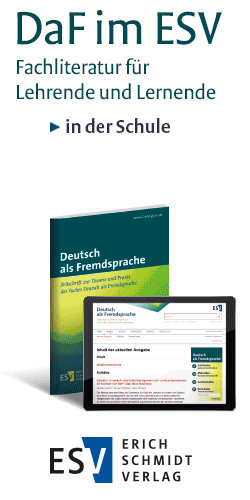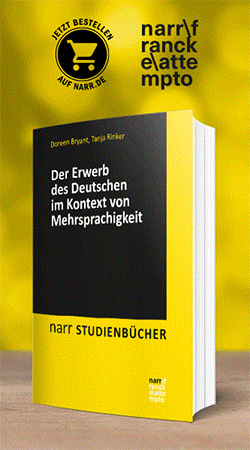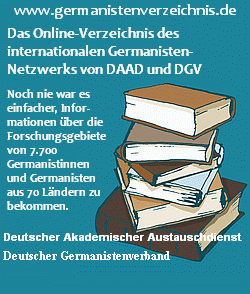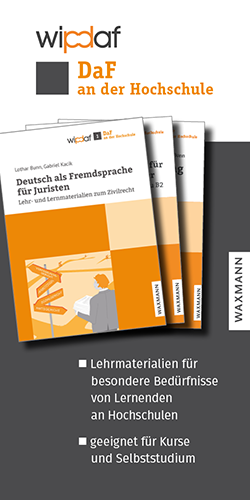Issue 2/2020 - ISSN
1470-9570
Morphosyntaktische, semantisch-lexikalische und funktionale Aspekte der Numeruskategorie im Deutsch-Italienisch-Vergleich und ihre sprach- und übersetzungsdidaktischen Implikationen
Goranka Rocco (Trieste) (pages 1-22)

 view
pdf (349kb)
view
pdf (349kb)
Der Beitrag fokussiert einige morphosyntaktische, lexikalisch-semantische und funktionale Aspekte der nominalen Numeruskategorie aus kontrastiver, sprach- und übersetzungsdidaktischer Sicht. Nach einer Betrachtung der allgemeinen Mechanismen und Besonderheiten der Numeruskategorie im Deutschen sowie des lexikographischen und grammatikographischen Umgangs mit der Kategorie folgt ein sprachvergleichsbasierter Systematisierungsversuch der für das Sprachenpaar Italienisch-Deutsch relevanten Problemkonstellationen, die negativen Transfer induzieren bzw. begünstigen können. Vor diesem Hintergrund wird zum Schluss auf die Frage nach Möglichkeiten fremdsprachendidaktischer und übersetzungsdidaktischer Sensibilisierung für die skizzierten Problemkonstellationen eingegangen.
“It’s a challenge, but I like it”: why Australian seniors want to learn German
Bettina Boss (Sydney) (pages 23-36)

 view pdf (310kb)
view pdf (310kb)
This article reviews the scholarly literature about older adults learning foreign languages, and then reports on a small-scale study of Australian seniors (average age 74) learning German at Sydney U3A (University of the Third Age). A thematic analysis of data derived from a questionnaire and individual interviews shows that the reasons given by the participants for wanting to learn German fall into four broad categories: an interest in the German language, or in languages generally; the wish for mental stimulation or an intellectual challenge; a personal connection, past or present, to a native speaker or speakers, and finally, the intention to travel to a German-speaking country, either as a ‘maybe’ or definitely. These findings are interpreted as evidence of the participants’ integrative orientation towards language learning in terms of Gardner’s 2010 SocioEducational Model. A comparison with the only other empirical study of older adults learning German as a foreign language (GFL), Berndt (2003), shows that both groups were motivated by similar factors despite differences in their attitude to the L2 community. The article concludes with some recommendations for teachers of foreign languages to older adults.
Die Lernstrategien von mongolischen Fremdsprachenstudierenden und von effektiven Lernern
Lkhamkhuu Dorjpalam (Ulaanbaatar) (pages 37-58)

 view
pdf (510kb)
view
pdf (510kb)
Das Ziel des Fremdsprachenunterrichts ist die Förderung des autonomen Lernens. Um Fremdsprachen erfolgreich zu lernen, ist es wichtig, dass die Lerner effektive und für sie geeignete Lernstrategien entwickeln. Lernstrategien müssen schon in der Schule vermittelt werden, damit die Schüler sie bewusst kennen lernen und zum Ziel passende Lernstrategien anwenden können. In diesem Beitrag werden die verwendeten Fremdsprachenlernstrategien von 636 mongolischen Studierenden, die Englisch, Deutsch, Russisch, Japanisch, Koreanisch und Chinesisch studieren, und die Lernstrategien von 26 effektiven Lernern analysiert.
Is a Schtoan a Stein? – How and why to teach dialects and regional variations in the German language classroom
Juliane Wuensch (Saratoga Springs, NY) and David Bolter (Bloomington, Indiana) (pages 59-78)

 view
pdf (459kb)
view
pdf (459kb)
The following article explains the necessity of including regional variants and dialects in the foreign language classroom and also provides a suggestion for a teaching unit which can easily be integrated and adapted in any German language classroom to better prepare students for their study abroad or travel experiences. It hereby draws on the necessity of exposure and explicit instruction for students to be able to not only identify but also comprehend regional variations. The teaching unit builds on a basic understanding of historical linguistics and uses the common core of German and English to explain the Bavarian dialect, as it is spoken in wide areas of Southern Germany and Austria.
New Approaches to Teaching a Capstone or Final Survey Course in German Studies at a North American University: With an Emphasis on Medieval Online Sources as Tools for the Modern Classroom
Albrecht Classen (Tucson, Arizona) (pages 79-96)

 view pdf (266KB)
view pdf (266KB)
This study introduces a teaching concept for the upper level of an undergraduate program in German Studies at university level through which a successful balance between the traditional demands of the ‘canon’ and the emerging diversity of available readings can be achieved. Focusing on cities as literary hubs makes it possible to integrate a wide range of literary works that we would want our majors to have been exposed to before graduation, while also allowing them to gain a solid understanding of regional and historical differences. This concept also relies on digital resources and thus combines print material and online material, especially with respect to medieval literature, allowing for a productive interaction between aspects of the Digital Humanities and German Studies.









